When I finished with my visit to the Temple of Hatshepsut, I went to a clearing from which the small electric train was departing, since the group I was on this excursion with was supposed to gather up there. While waiting, I took photos of a nearby slope where you can see a path leading to numerous tombs that were dug out in the rock so long ago. When the Christianity was taking over in this territory, already during the late Roman Empire period and onwards, many of these tombs were often used as cells for monks.
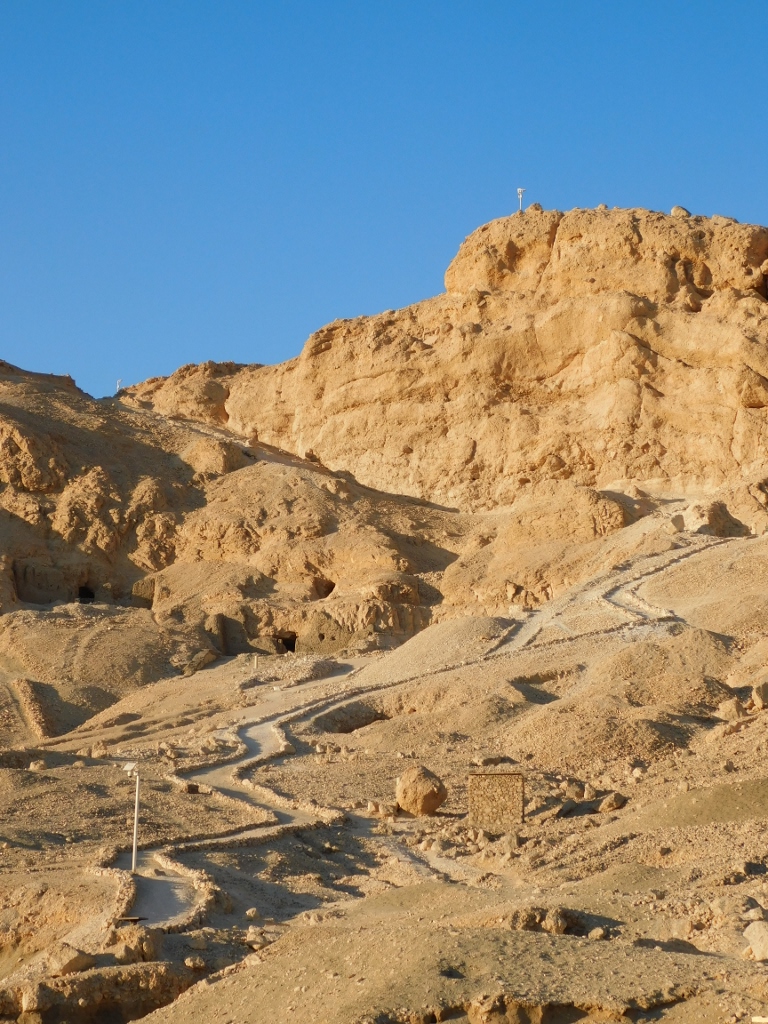 Slope of a hill near the Temple of Hatshepsut
Slope of a hill near the Temple of Hatshepsut
Now was the time for the group to go to one of the nearby workshops that make all kinds of objects out of alabaster and other rocks. This is also a part of the tourist offer and an unavoidable segment of any stay in Luxor.
And then we headed back towards the Nile, However, since we did have a little time left and there was some daylight as well, we made a stop by the Colossi of Memnon. To start with, here is a photo of one of the two colossi from March 2001 when I visited them in the middle of the day.
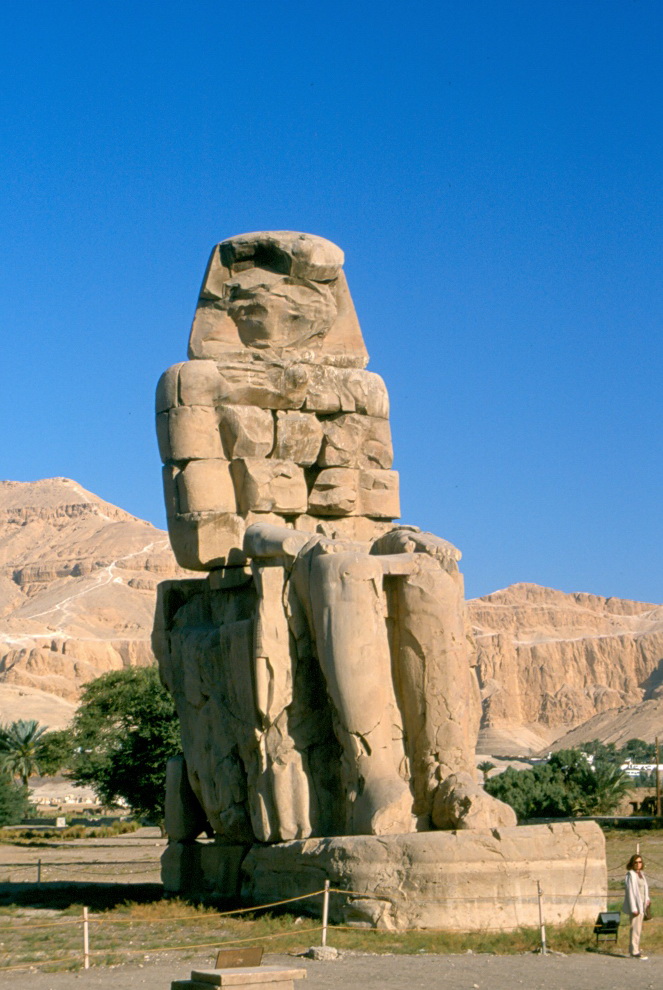 A Colossus of Memnon (photographed in 2001)
A Colossus of Memnon (photographed in 2001)
In November 2021, at dusk, the light was quite different.
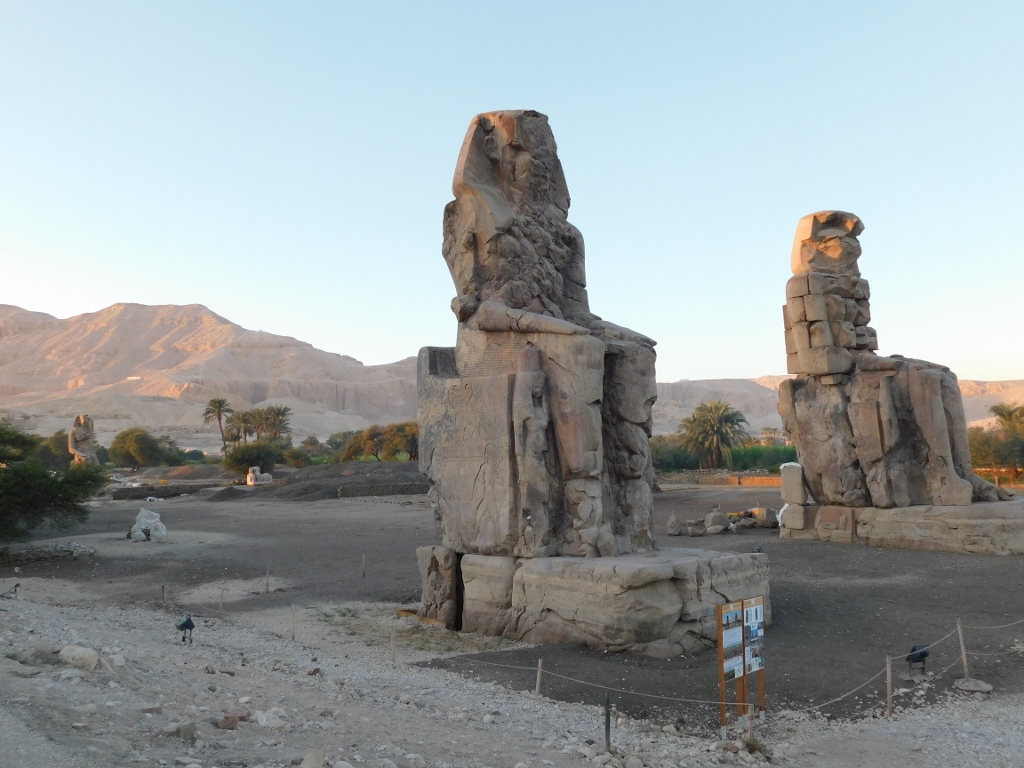 Colossi of Memnon
Colossi of Memnon
These are in fact the statues of Pharaoh Amenhotep III, a ruler of the 18th dynasty (he was the father of Akhenaten and grandfather of Tutankhamun), that were erected around 1350 BCE at the entrance into the Mortuary Temple of this pharaoh.
The colossi are around 18 m high and they stand approximately 15 m apart. They were made out of rock excavated near Cairo and it is believed the rock was brought here by land, rather than by the Nile, since that would be far too complicated. Over time, both of the statues have been rather damaged. The north colossus (in the photo above, the colossus on the right-hand side) was reconstructed by Ancient Romans.
The story about their name is, however, quite interesting. Namely, there was a powerful earthquake here in 27 BCE which heavily damaged precisely the north colossus and toppled it from waist up, while the lower segment ruptured. Since then, at dawn a sound could be heard quite clearly coming somewhere from the damaged colossus. Today, it is presumed that this sound could have been created when dew started to evaporate from the cracks once the daily temperature started to go up. Since Memnon, a hero of the Trojan War, was the son of Eos, the goddess of dawn, this associative link was made. It was first only that colossus that was called “Memnon’s” and then the name expanded.

And so the excursion to Luxor, which I did from Hurghada in 2021, definitely ended here. The return trip was again long and boring, but nothing could be done about it. Back in 2001, after the whole day of sightseeing we also went straight to Hurghada by coach. At that time we had a couple of days of a mini-holiday there before the end of the trip (this applied to the group, but not to my mom and I – more about it a little later).
In November 2021, however, I was on a mini-vacation in Hurghada that was only a week long, but with a good rhythm (early night, early morning, subdued activities during the day), even that was enough for me to rest well. Admittedly, that rest included this excursion to Luxor (with my departure from the hotel at 4.10 am!), but I have always been fascinated with Ancient Egypt and I don’t think I could ever have too much of visiting the sites that belong to this, to put it mildly, impressive civilisation. Because of that, already back at home I decided quite clearly that I would go from Hurghada for this day’s excursion on the riverbanks of the Nile, even if it took away the precious and limited time I had for my rest. After all, feeding one’s soul is one of the best ways to feed and recuperate our body and mind.
As for Hurghada itself, let me just mention that this is a relatively new settlement, founded at the beginning of the 20th century as a fishermen village which then started to develop as a tourist destination in the second half of the 20th century. Apart from offering sunshine practically throughout the year, the beaches, the sea, hotels and swimming-pools, it is also important as an excellent place for diving and snorkelling. Very often one can go snorkelling already at the selected hotel, because many hotels actually had to clear a part of the corals in their section of the coast in order for their guests to be able to enter the sea there and just go swimming. However, for those who like to look at the underwater world on a coral reef, it is almost always possible to find something interesting already near one’s hotel room. Certainly, there are also numerous excursions both for snorkelers and divers, since the Red Sea is one of the best places in the world for this type of activities.
As for my “summer vacation” in Hurghada in November 2021, there is actually not much to say about it. Since it was very important for me to rest as much as possible, I did not leave the hotel, apart from the longer early morning walks by the sea. After all, we all have our own personal style for resting and spending summer vacations. The rule I have developed over time is to intensively enjoy in what I like, without bothering about the aspects I possibly don’t like. I acknowledge them and simply move on. I’m mentioning this because I have heard and read different, most often negative, comments dealing with accommodation, food, local customs (bargaining and expecting tips), etc. In this sense, the coast of the Red Sea should be visited precisely because of that – the coast of the Red Sea. Certainly not because of any hotel or food. I believe I did not go to bad hotels and I certainly did not starve, but whatever these aspects were like, that all paled in comparison to what was offered by the crystal clear waters of this magical sea and its coast.
On the other hand, if you want the food you actually like, then make it yourself when you get back home. This is what I often do and so here is the recipe for Basbousa that I made later in Belgrade.
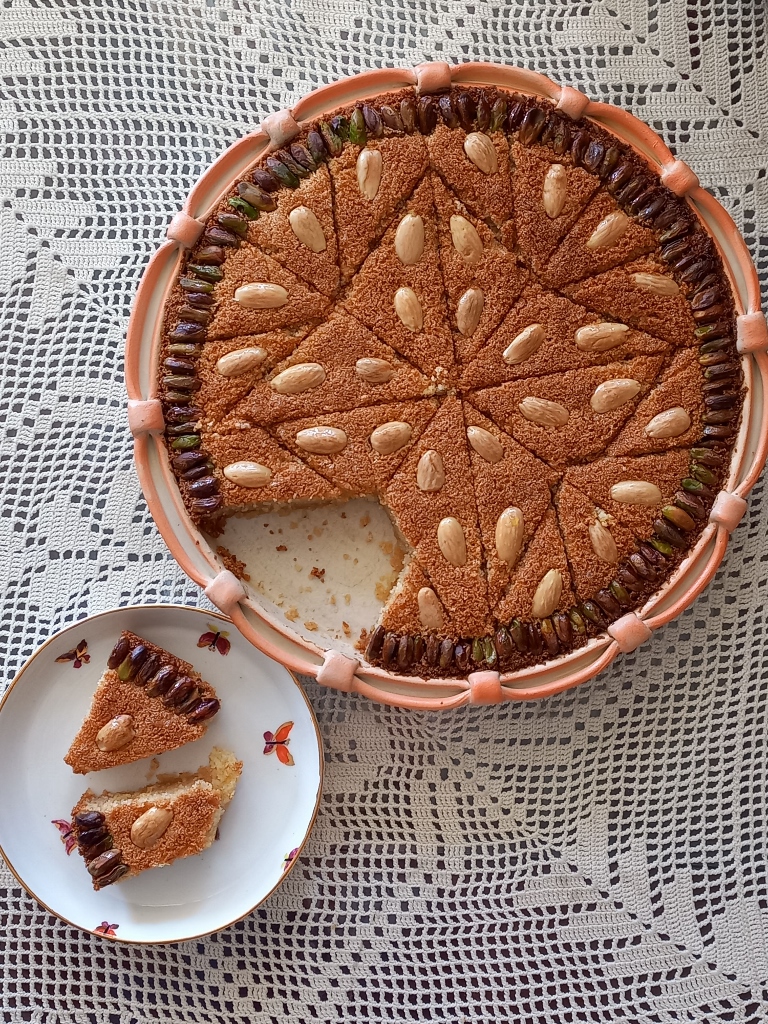 Basbousa (baked and served in the dishes I made myself on my pottery classes!)
Basbousa (baked and served in the dishes I made myself on my pottery classes!)
BASBOUSA
- 300 g semolina
- 100 g sugar
- 6 g baking powder
- 60 g ghee (I didn’t try to make it with butter, but it probably works)
- 40 g coconut oil
- 1 tbs of honey
- 1 tbs of tahini
- 100 g of yoghurt
- different nuts for decoration
Syrup:
- 200 g sugar
- 1 cup of water
- 1 tbs of honey
- 1 tbs of lemon juice
- a few sprigs of Pelargonium graveolens or some vanilla sugar, for the aroma
Mix the semolina, sugar and baking powder. Put a dish with ghee to melt on the stove and add the coconut oil, honey and tahini. This should all dissolve more or less, so then pour the mixture over the dry ingredients and mix it. Then add the yoghurt and bring it all together. Put it in a shallow dish that will go into the oven and press it down. Cut a pattern in order to get fields to put the nuts into. Then put it in the oven to bake at 200 degrees C for around 15-20 minutes (until it gets a nice colour).
Make syrup out of sugar, water and the rest of the ingredients. Simmer for 2-3 minutes and leave it on the side. When the cake is baked, pour the syrup slowly over it and then put the baking dish back into the oven (that has been turned off) and leave it there to cool.
And as for Hurghada, well, while I was there every morning I got up early and went for a walk along the sea.

When I got to a slightly greener area, I would regularly come across a lot of inhabitants, primarily in the shape of numerous bird species. When I say numerous, I actually think in reference to the area of a couple of hundred square metres. Needless to say, I could not help myself and had to take photos. Here they are...
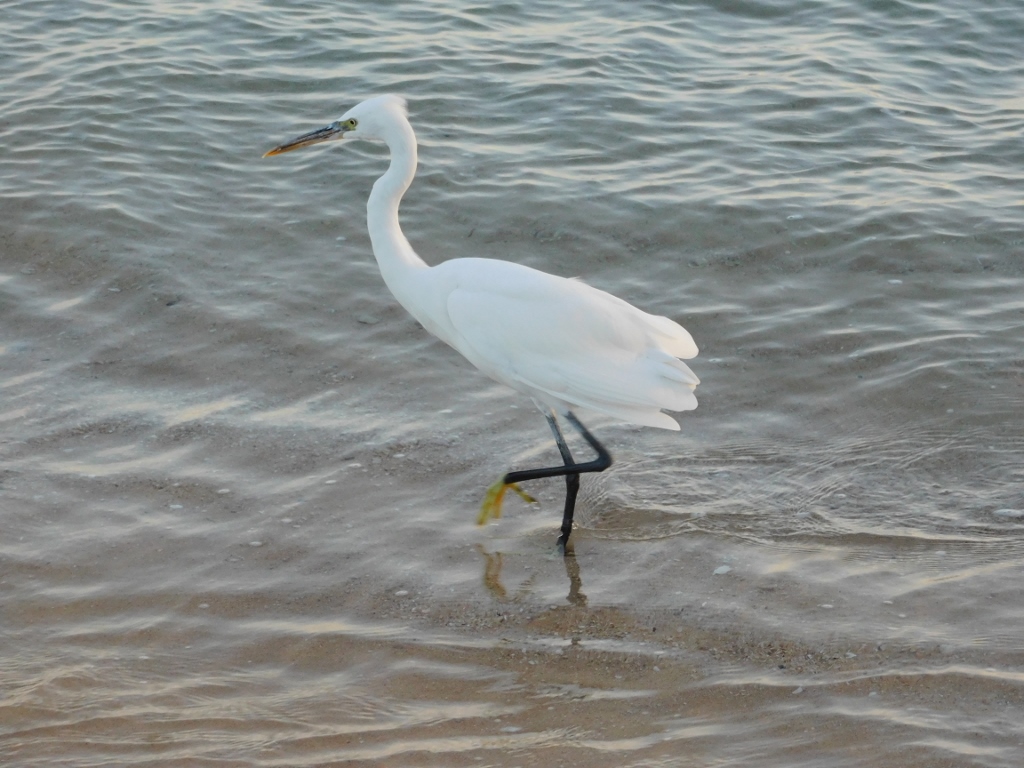 Western reef heron, white variant (Egretta gularis) walking in the shallows
Western reef heron, white variant (Egretta gularis) walking in the shallows
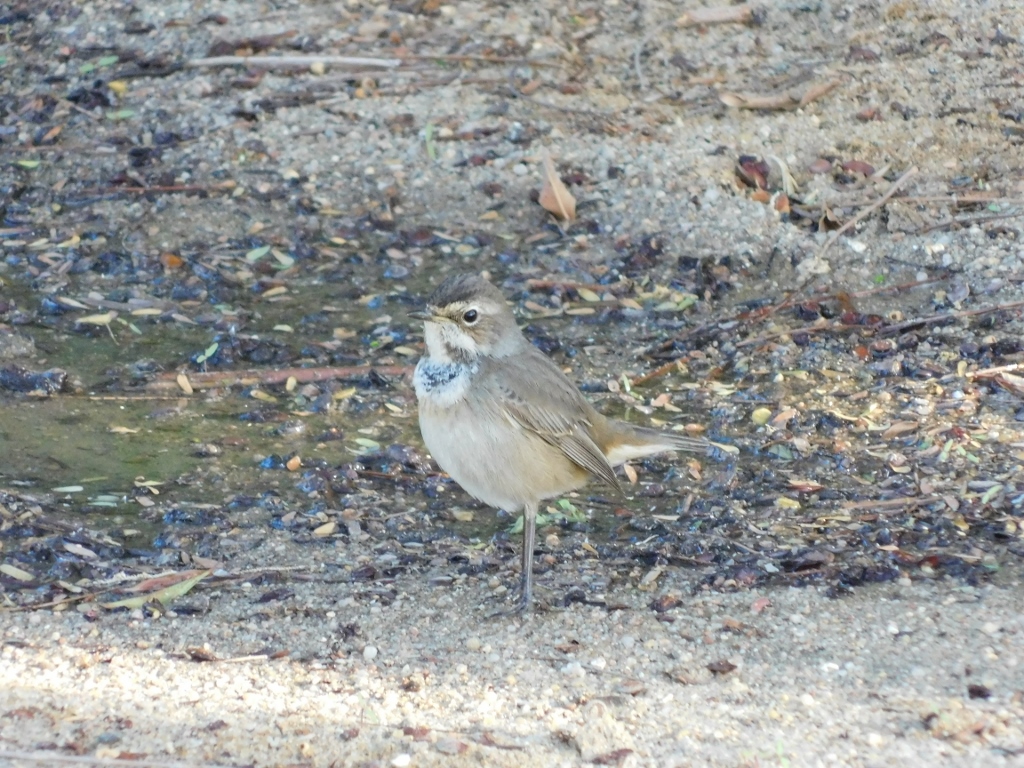 Bluethroat (Luscinia svecica)
Bluethroat (Luscinia svecica)
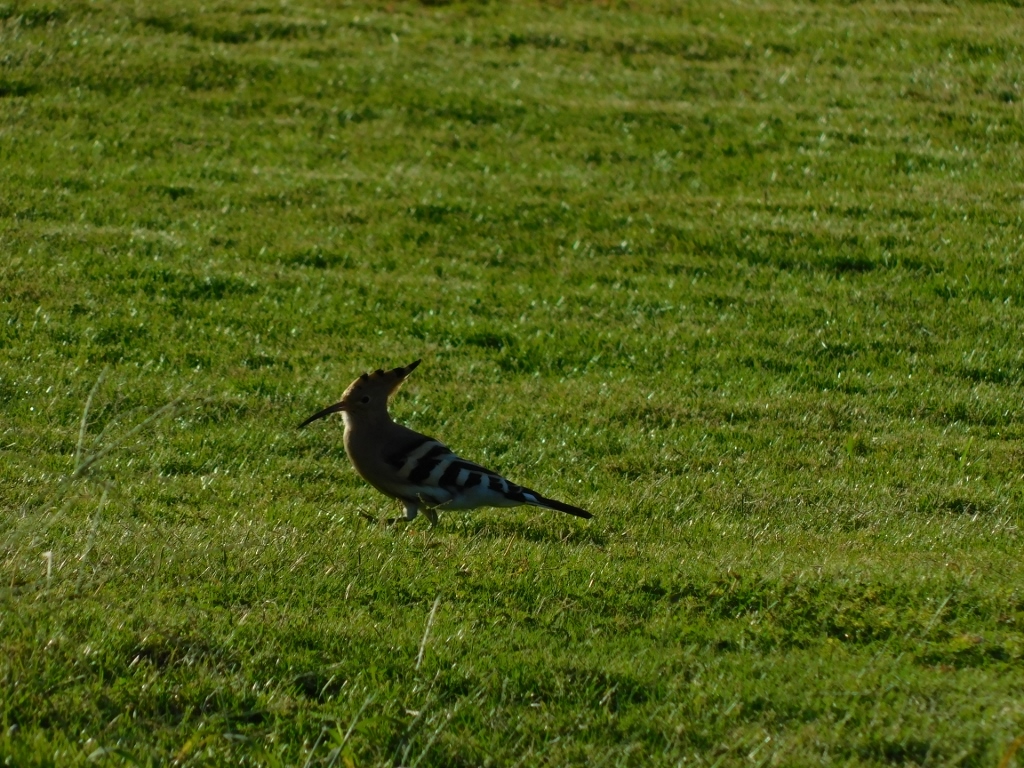 Eurasian hoopoe (Upupa epops)
Eurasian hoopoe (Upupa epops)
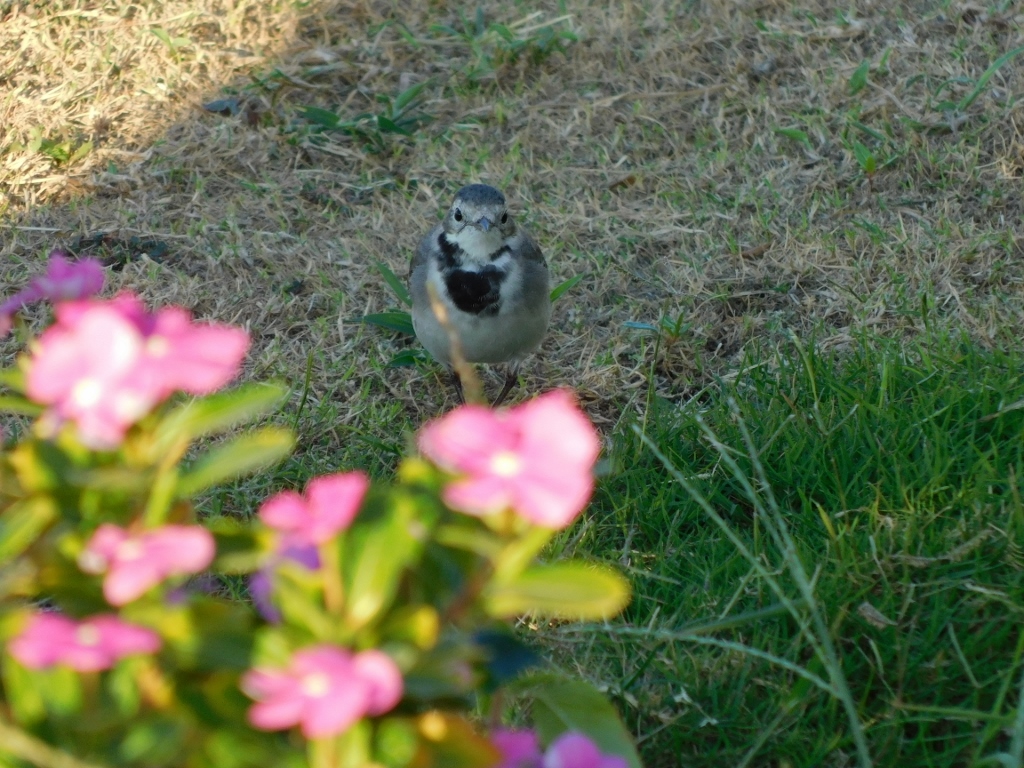 White wagtail (Motacilla alba)
White wagtail (Motacilla alba)
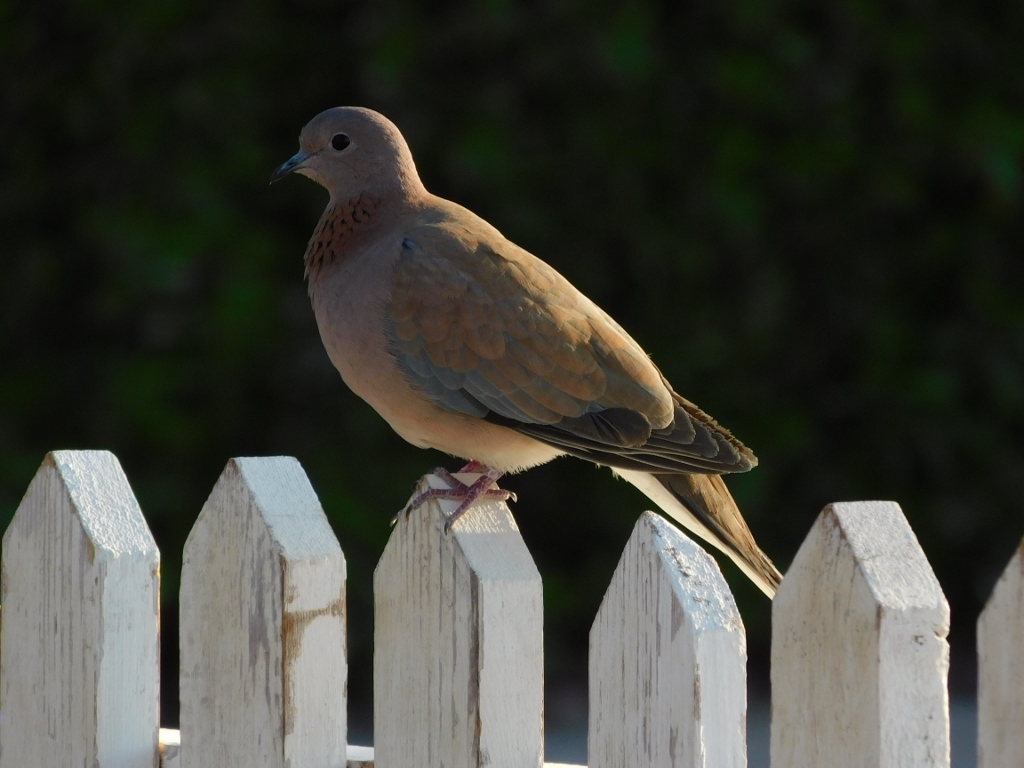 Laughing dove (Spilopelia senegalensis)
Laughing dove (Spilopelia senegalensis)
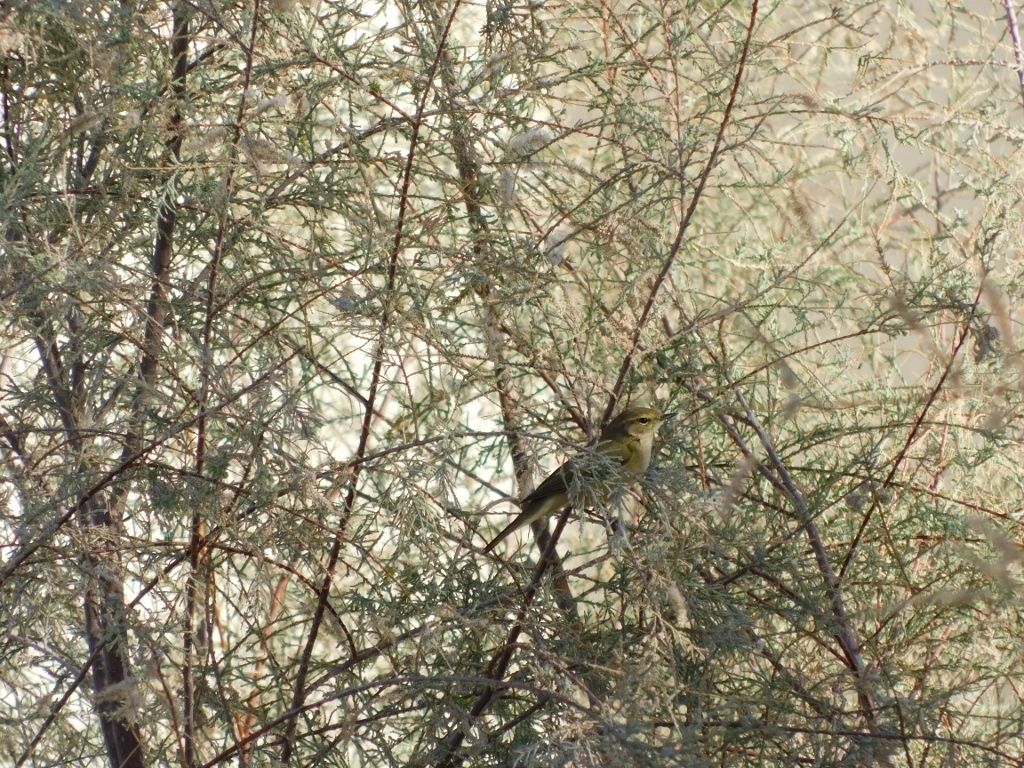 Common chiffchaff (Phylloscopus collybita)
Common chiffchaff (Phylloscopus collybita)
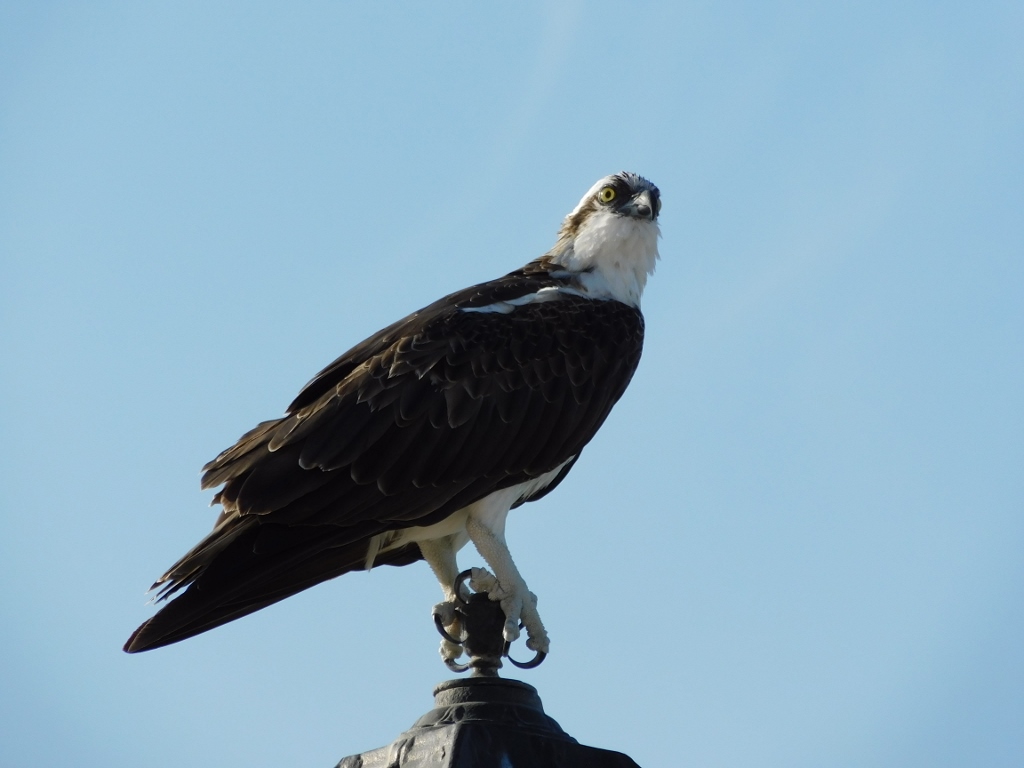 Osprey (Pandion haliaetus)
Osprey (Pandion haliaetus)
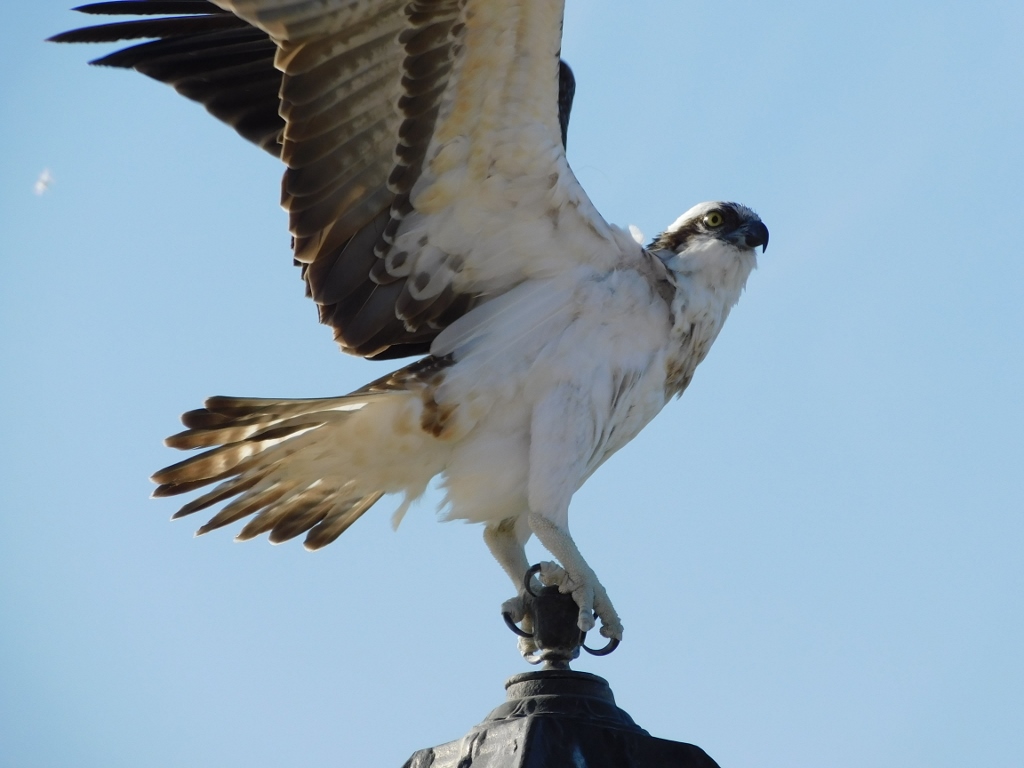 Osprey (Pandion haliaetus)
Osprey (Pandion haliaetus)
One morning I came across an interesting and potentially “dangerous” situation. Admittedly, I think the cat was not serious at all and just practiced or simply could not resist the instinct.
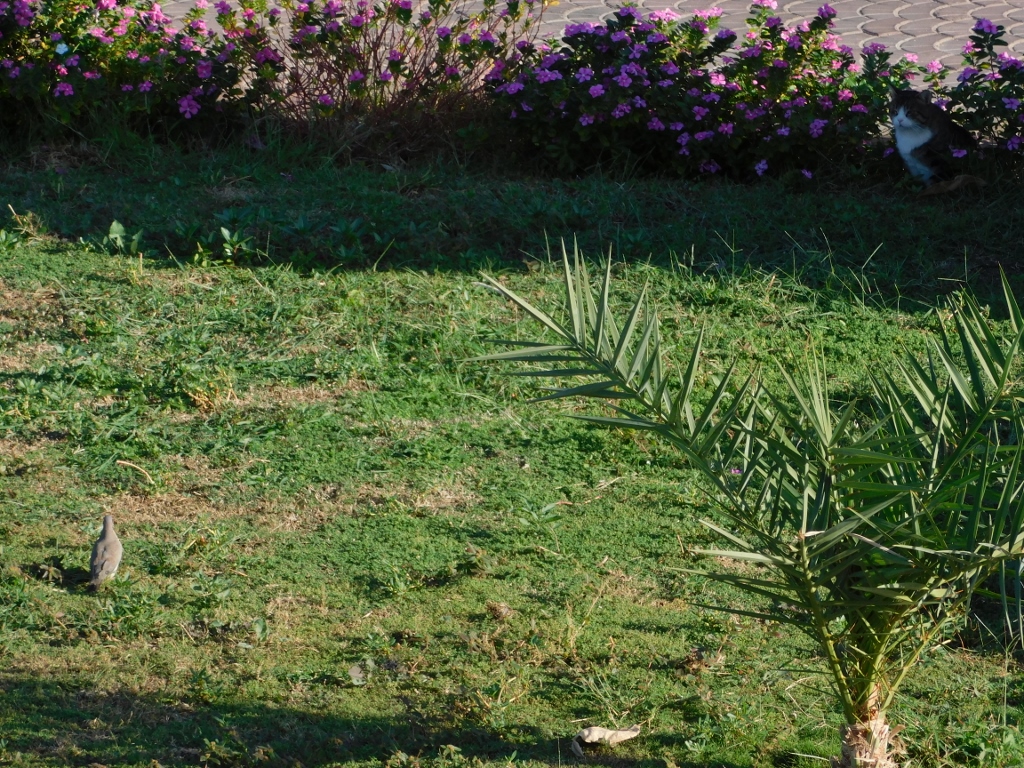 Morning fitness (note the upper right-hand corner)
Morning fitness (note the upper right-hand corner)
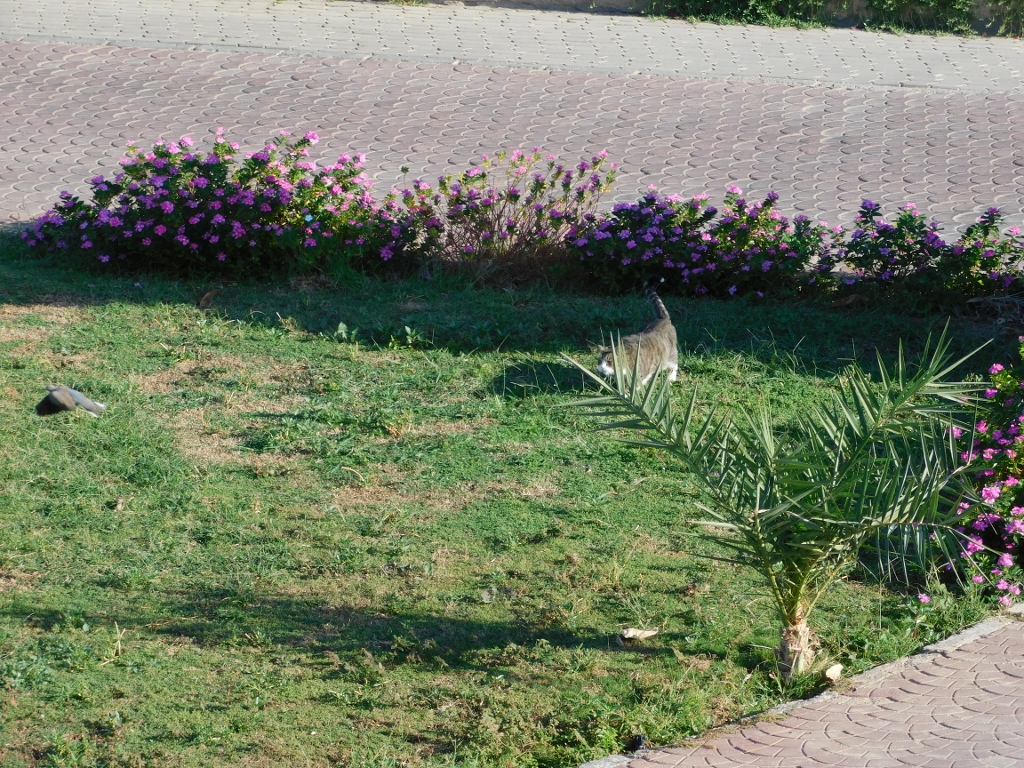 Now let’s walk towards the bird...
Now let’s walk towards the bird...
In the area where I walked there was a pier and from there I could watch the sea and some of its dwellers.
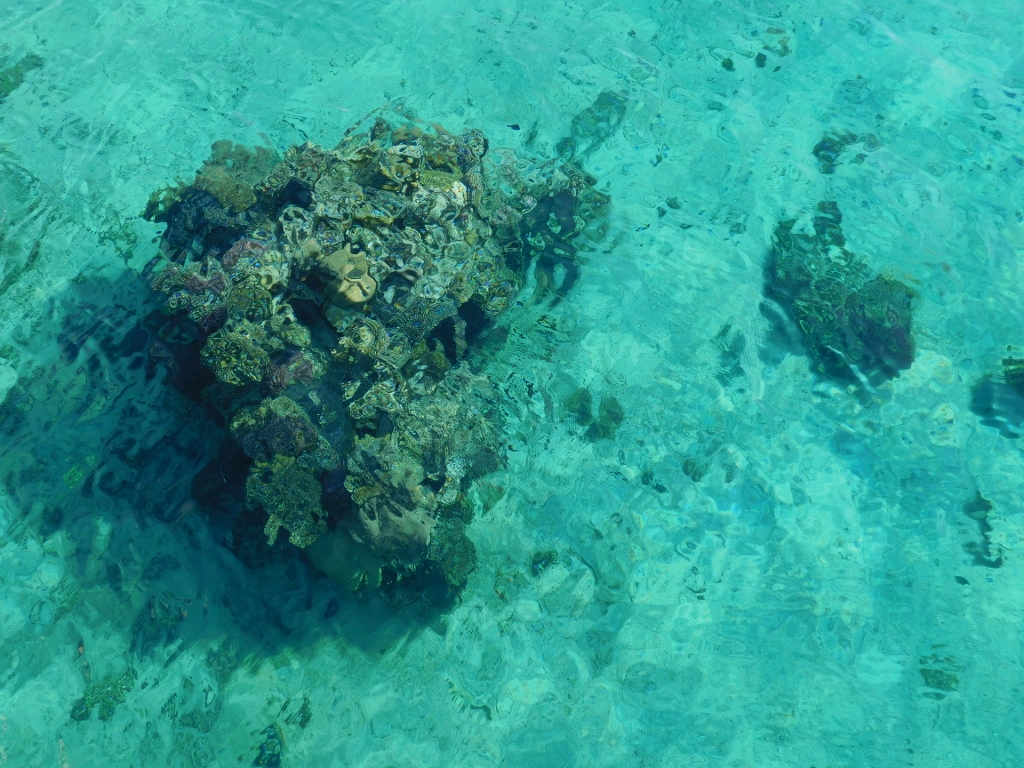 Amazing waters of the Red Sea
Amazing waters of the Red Sea
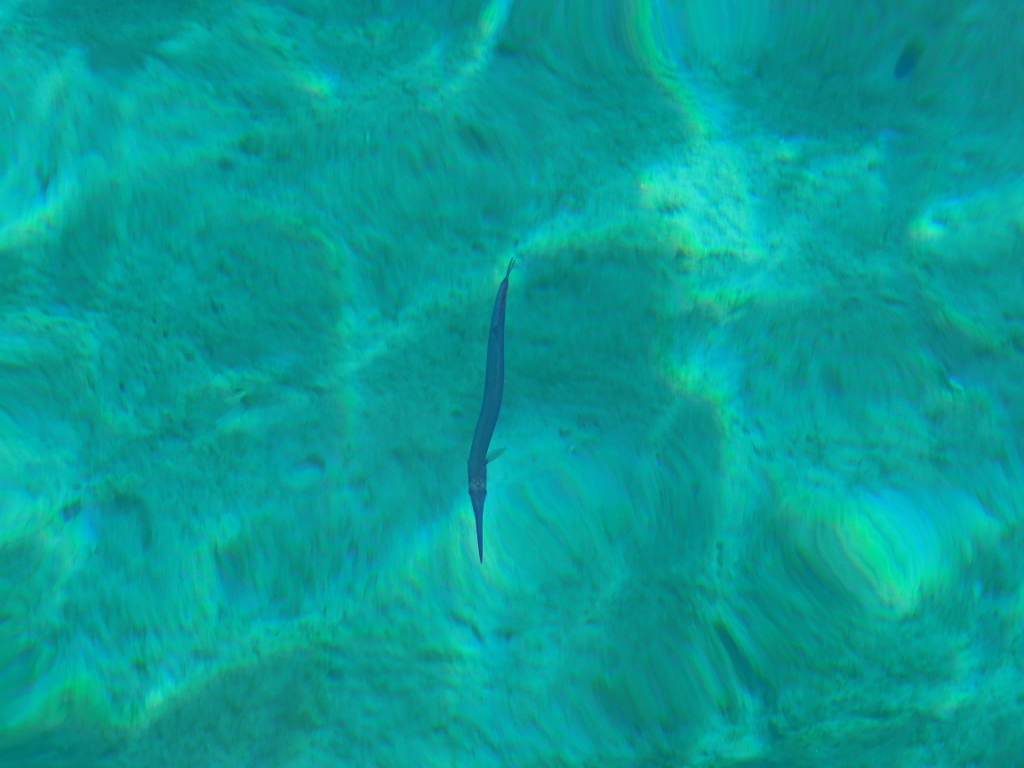 A needlefish family specimen
A needlefish family specimen
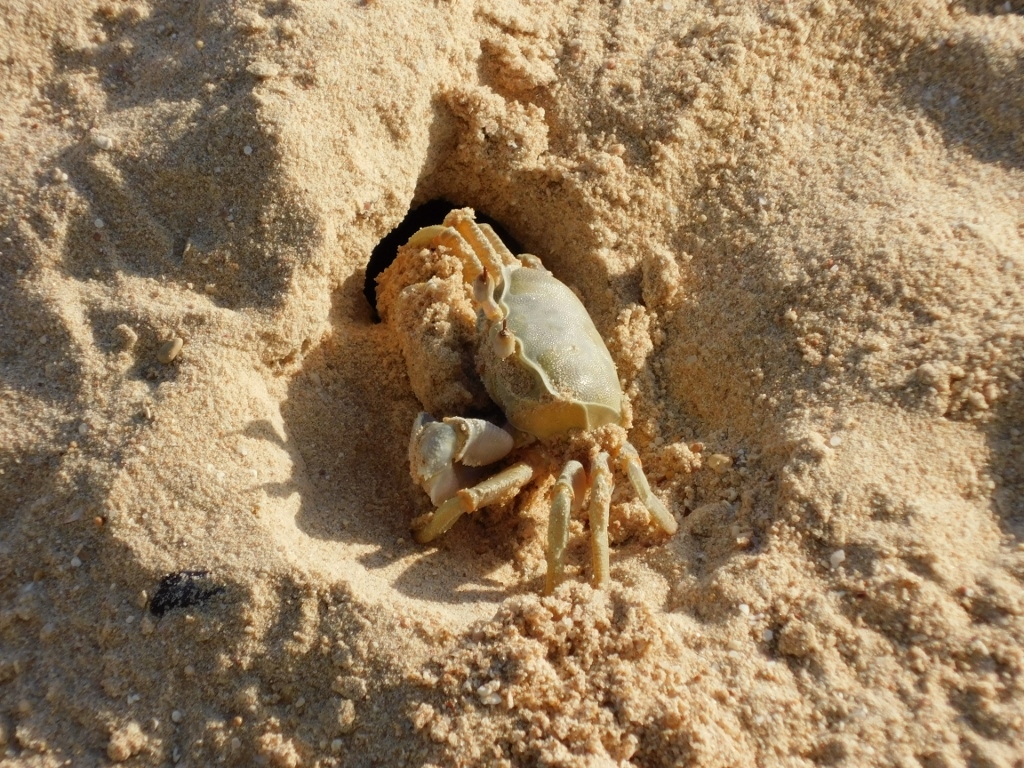 A crab on its front door
A crab on its front door
At the end of the day I would sit on the beach very content, enjoying the last sunrays.

And between the morning when I walked and took photos of birds and the sea, and the dusk when I marvelled at the sky and the setting Sun, I spent most of the day admiring the perfect picture. Here it is...
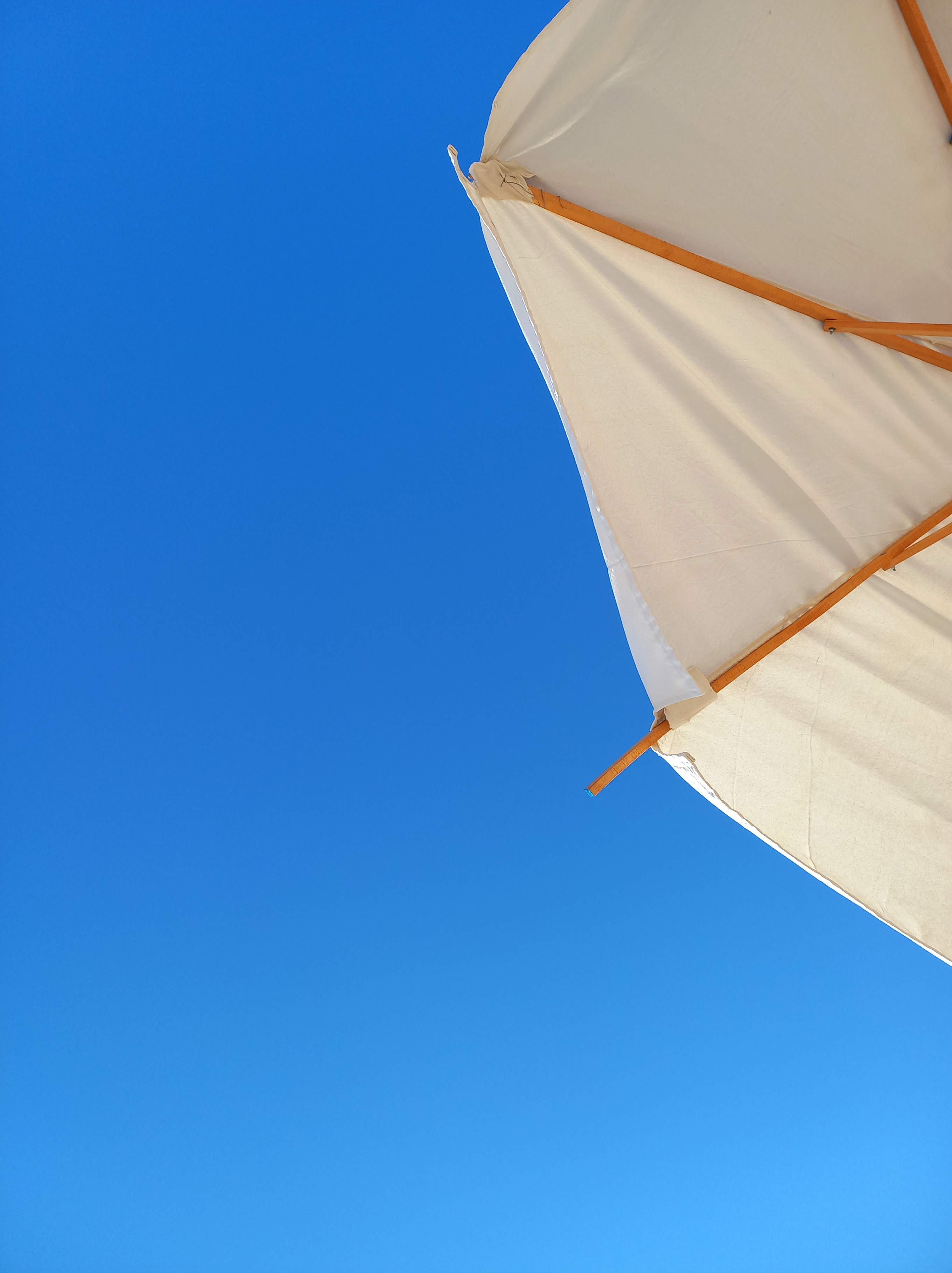 The best rest
The best rest
In addition to being able to see in the water beautiful exotic and colourful fish even without snorkelling equipment, just by swimming close to the beach (the water is THAT clean and clear), in November 2021 I did not go to any of the numerous excursions that deal with diving/snorkelling and enjoying the underwater world. The main reason was what I have already mentioned – my tiredness and the need to relax and rest as intensively as possible. The other reason was that I often snorkelled when I was in Sharm el-Sheikh, another Egyptian destination on the coast of the Red Sea, back in 2008. This will be covered by some other travel stories.
For now, let me just say that in November 2021, after a week’s vacation I simply went back home, but in March 2001 (I’m going back to that period again now), together with my mother I separated from the group – they returned to Serbia and the two of us stayed in Egypt for additional 4-5 days. The main reason was that my mom’s grandmother, i.e., my great-grandmother was buried in Egypt. In Alexandria, to be more precise. So, I put it into my head that I want to go to Alexandria to look for my great-grandmother’s grave.
It was clear to me before this trip that I would not know where to start looking when I arrived in Alexandria (the internet was significantly less developed then than now). Since my great-grandmother was Italian, it was logical that she was buried in a Christian, i.e., a Catholic cemetery. I tried to locate such a cemetery in the map of Alexandria, but without any success. Then it dawned on me! I called the Embassy of Vatican (the Apostolic Nunciature) in Belgrade and they gave me a contact of their embassy in Cairo. I sent them an e-mail explaining what this was about and already the next day I received an e-mail from the Apostolic Nuncio himself. As it turned out, as a young diplomat, he served in Belgrade and knew exactly where the Apostolic Nunciature was and he also asked me if I knew how Jovanka was doing!!! (He was referring to Jovanka Broz, the wife of the President of Yugoslavia, Tito.)
The Apostolic Nuncio, Monsignor Paolo Giglio, was exceptionally kind and eager to help, so he invited my mother and I to the Embassy in Cairo to meet, after we had finished with our sightseeing tour of Egypt. And so, when the time came, the two of us dressed up and went to the embassy. Monsignor Giglio gave us advice about which train to take and he also called a monastery in Alexandria, announcing our visit, in order for them to help us on the spot.
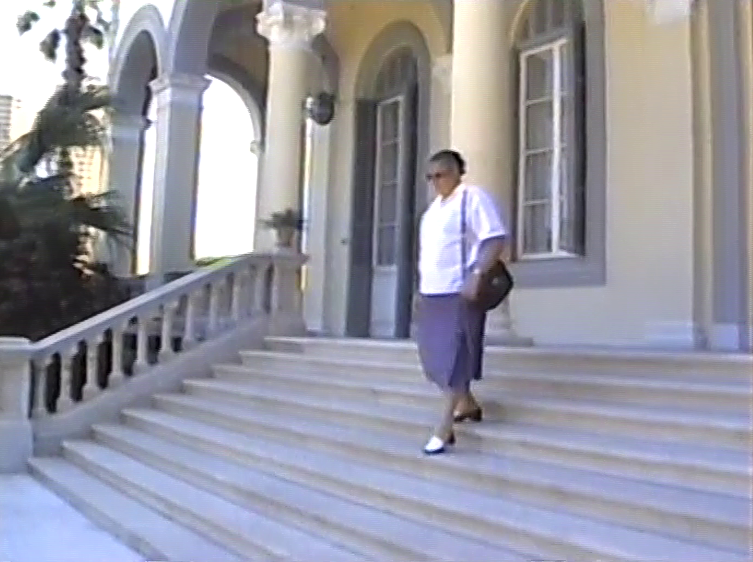 My mom on the staircase in front of the embassy building
My mom on the staircase in front of the embassy building
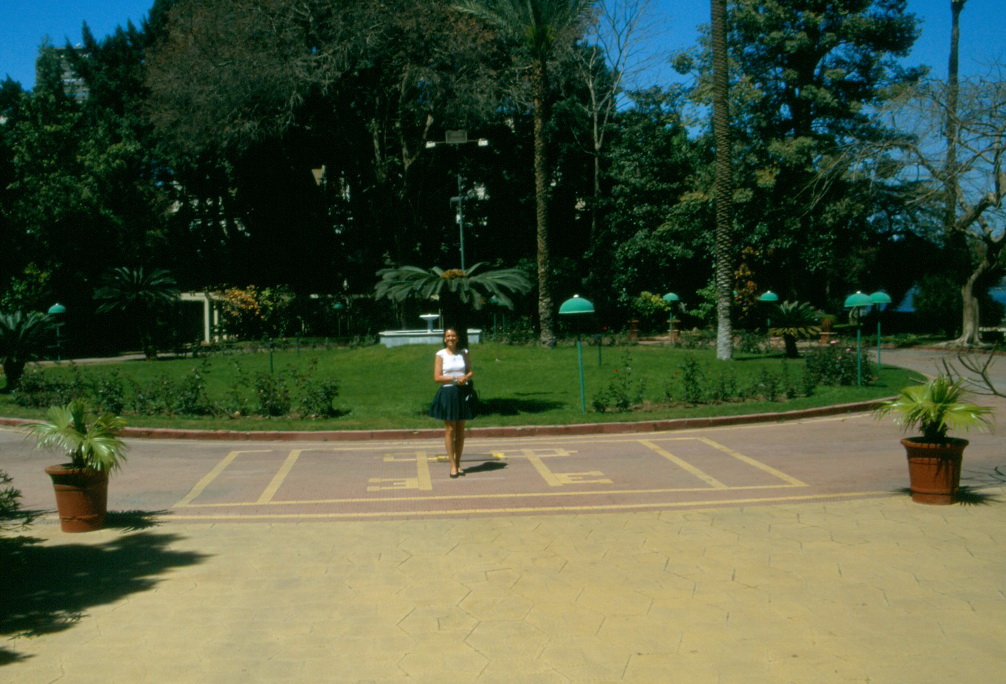 In the embassy’s courtyard
In the embassy’s courtyard
After this, my mom and I met with Mara (Mariana), our guide during the trip around Egypt, who lived with her husband in Cairo at the time. Today she lives in Belgrade and we are still dear friends.
Already the day after we took a train to Alexandria. I must say right away that the stay in Alexandria was rather chaotic, absolutely insufficient and in many aspects unsatisfactory.
To start with, I wanted us to stay in the downtown area or, more precisely, at the Cecil Hotel, on account of The Alexandria Quartet, Lawrence Durrell and one of my all time favourite literary quotes – “When you pluck a flower, the branch springs back into place. This is not true of the heart’s affections.” Instead, the agent I was organising this with put us into a better hotel, in a wonderful spot, but 16 km away from the centre!!!
That meant driving around in a taxi the whole day. In order to avoid constant haggling with taxi drivers, I agreed on the price for the whole day with one taxi driver, but then he started driving wherever he liked and we wasted a lot of time for nothing, so we backed out of the deal.
Still, let me go back to the reason why we came here in the first place. To start with, we went to St. Catherine’s Cathedral that serves as the church of the Franciscan Monastery in Alexandria. Since the Apostolic Nuncio had already called the day before, announcing our visit, first we were given a detailed tour of the church.
The church has some French mosaics, as well as the largest organ in Egypt.
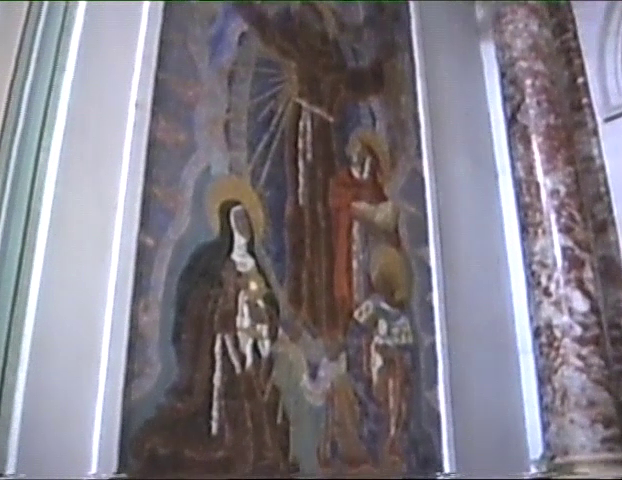 St. Catherine’s Cathedral
St. Catherine’s Cathedral
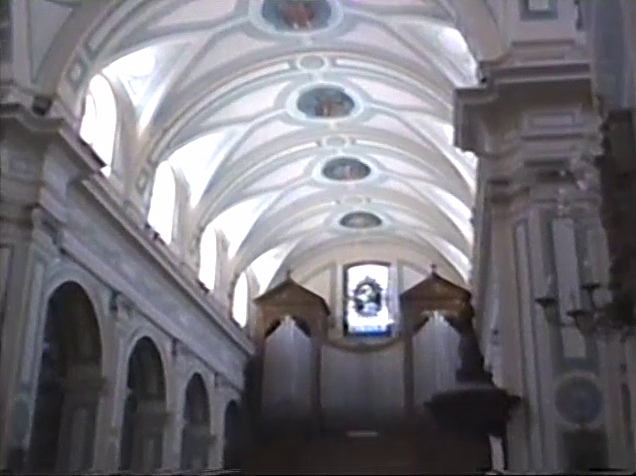 St. Catherine’s Cathedral, the organ is in the nave
St. Catherine’s Cathedral, the organ is in the nave
It is interesting, however, that the last Italian king, Victor Emmanuel III, was buried here. He abdicated in 1946 in favour of his son, but when the abolishment of kingdom was voted in a referendum, he went into exile precisely to Alexandria, Egypt, where he passed away the year after. I say “was buried here,” since his mortal remains were returned to Italy in 2017.
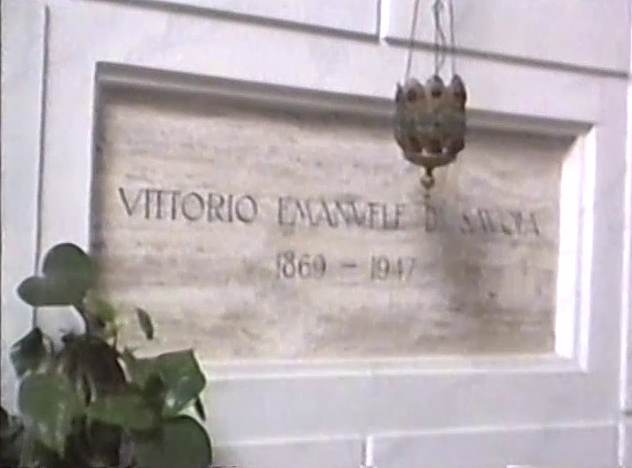 St. Catherine’s Cathedral, the place where the last Italian king was buried
St. Catherine’s Cathedral, the place where the last Italian king was buried
What makes this king “interesting” for the people from the Balkans is the fact that his wife was a daughter of Montenegrin King Nikola I Petrović – Elena (original name: Jelena) (who was, by the way, the sister of Serbian Queen Zorka, married to King Petar I Karađorđević). Additional, striking, curiosity in connection with this royal couple, especially when you see their photos, is another fact: he was 153 cm tall and she – as much as 180 cm! And yet, I remember hearing a long time ago that they had a harmonious marriage and loved each other very much.
When we finished with the visit to the cathedral, the gentleman who served as our guide there called the cemetery to announce our visit and we went there by taxi. In line with some vague family account, my mom knew more or less when her grandmother passed away (the relations with the family on my grandfather’s side practically did not exist, but that’s a whole other story). Be as it may, the two of us made a couple of circles around that small cemetery, but we could not see any tombstone with my great-grandmother’s name. Then we started digging in the books the employees of the cemetery gave us and we finally managed to find the data. My great-grandmother, Maria Gregoric, passed away on 20 April 1951 and this happened in Alexandria where she was buried. The book, of course, contained the data about the plot, i.e., the part of the cemetery where she was buried, but there was no tombstone left. We presumed that it has been removed since nobody paid for the cemetery fee for decades.
Although it was never realistic to find more that what we did, we were still very disappointed and emotionally drained. Admittedly, I did have in mind an attempt at sightseeing, but I really did not feel like driving around in a taxi any more. In the end, I gave up all of that and we simply came to the centre. Right by the Cecil Hotel.
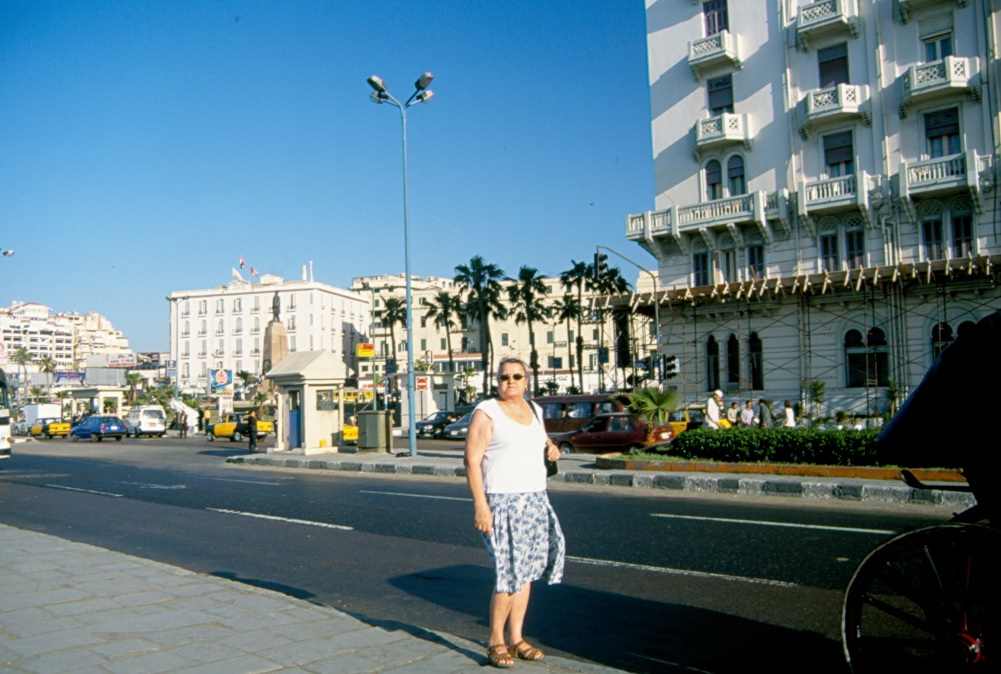 My mom at the promenade by the sea in Alexandria; the Cecil Hotel is in the photo on the right-hand side
My mom at the promenade by the sea in Alexandria; the Cecil Hotel is in the photo on the right-hand side
It was also time for us to eat something, so we went for a light and late lunch precisely at the Cecil Hotel. At the moments of grave disappointment, one should give oneself treats, right? We even went afterwards for a ride in an open carriage in the direction of the Citadel, enjoying the pleasant temperature and the view at the bay of the Mediterranean Sea. The Citadel was closed to visits, so I just filmed it from some kind of an asphalt-covered lot beside the sea.
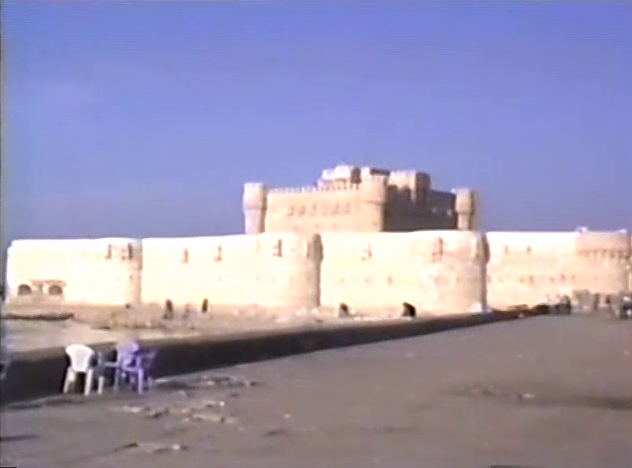 Citadel in Alexandria
Citadel in Alexandria
We then returned by the same open carriage to the elegant Abu al-Abbas al-Mursi Mosque, but by this time we were already rather tired, so we did not visit the mosque.
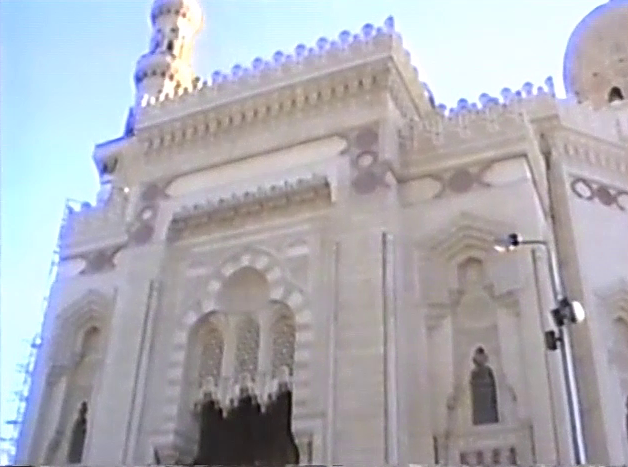 Front facade of the Abu al-Abbas al-Mursi Mosque
Front facade of the Abu al-Abbas al-Mursi Mosque
And then we went back to the hotel where we retired to our room early. The next morning, after breakfast, we had some time to walk around the Al-Montaza Gardens; after all, our hotel was right across the street from the main entrance.
The Al-Montaza Gardens cover the area of around 60 hectares. In the past there used to be royal gardens here and this whole area is called the Montaza Palace, although there are also a couple of palaces that are mostly summer residences used by the last khedive of Egypt, followed by the subsequent sultans and kings, as well as the presidents of Egypt. In the period from 1892, when the first palace was built, until 1953, when the last Egyptian king was deposed after the 1952 revolution, the form of the rule kept changing, hence so many different names of the users of the palaces. In any case, a larger building is called Al-Haramlik Palace and it was built in the Ottoman and Florentine styles in 1932, while today it has been converted into a museum.
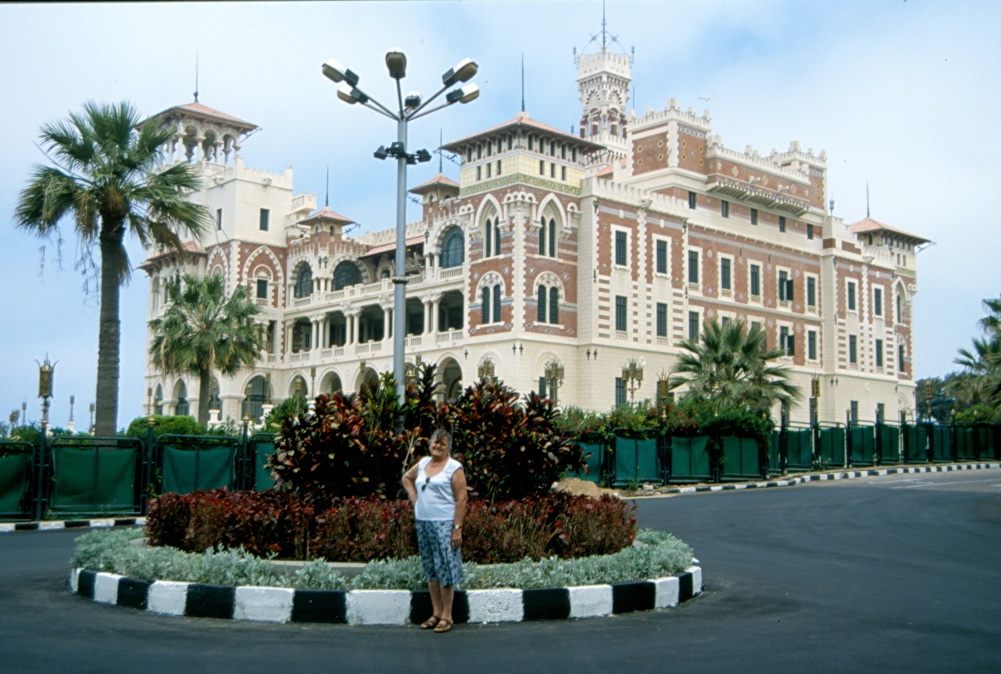 My mom near the Al-Haramlik Palace
My mom near the Al-Haramlik Palace
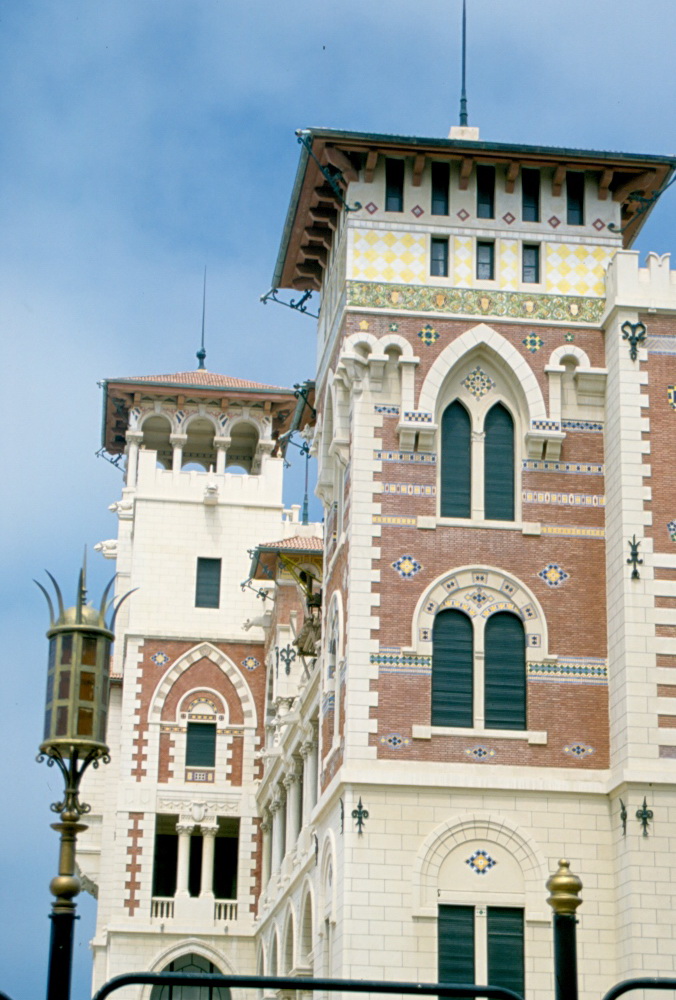 Al-Haramlik Palace, a detail
Al-Haramlik Palace, a detail
After this, I must say, pleasant walk in the park, we went to the railway station and then we returned to Cairo. A couple of days later, we were back home. Here is the map that shows the places I have written about in these stories about my travel in Egypt in 2001 and 2021.
Egypt is an exceptionally interesting country. The history of Egypt, primarily in the shape of Ancient Egypt, which in my mind is the most impressive civilisation that ever existed, makes this country an absolute magnet for visitors. On the other hand, you should not neglect parts of other civilisations and religions that have left their mark here over time. The contemporary elements, and here I’m probably thinking mainly of the spectacular Red Sea, the almost everlasting sunshine and the possibility of having a relaxed holiday throughout the year, provide for additional attraction even for those not interested in history.
Regardless of the rather good and comparatively thorough visit to Egypt on a couple of occasions which I wrote about in this series of travel stories, I still have an impression that there is so much still to be seen and I already have a clear idea of making a large circle around Egypt organised by myself. And who knows? Maybe I will do it one day...